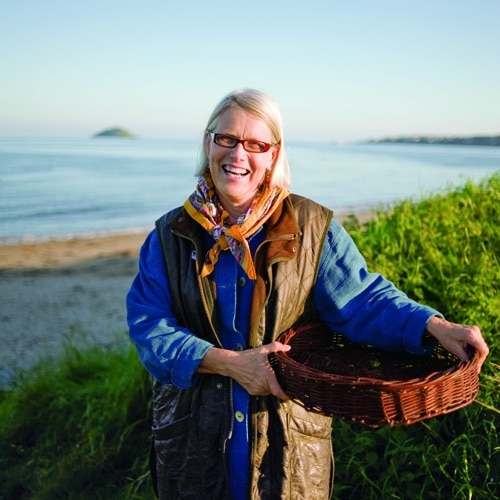Best Ireland Food Tour: Chef's Expert Review
Plan your trip: Ireland Travel Guide "
"When I was a girl, first we put the potatoes on to boil, then we decided what was for dinner," says my husband's grandmother as she watches me make rice for dinner.
"But that's a myth, isn't it —that Irish people love potatoes?" I ask Gram, turning to face her so she can read my lips.
"Not in my house it wasn't," she says firmly.
"What else did you eat?" I press. "Didn't your mom make any traditional dishes?" As a chef, I don't like this idea that the culture I've married into has no decent food.
"Not really," Gram answers.
I think about this in the context of our upcoming family trip to Ireland. We are fellow travelers with different purposes: Gram is hoping to find out more about the homeland of her ancestors, who came to America in the years after the potato famine. I am going to discover the renaissance of Irish food that started in the hands of small artisanal cheese makers and has extended to charcuterie, an amazing fishing industry and a strong Slow Food movement that ties the cuisine to the country. As part of our journey, I'm determined to show Gram that Ireland's days of meat and spuds are a thing of the past.
Months later, we arrive in Dublin to a chilly rain; jet lagged and hungry, we search for a place to eat. Settling on one of the ubiquitous sandwich shops that exist three to a city block, we scan the meager menu. There are sandwiches with cheese, ham or other pork. Tuna and chicken salad round out the offerings. A list of available teas is longer than all the other assorted beverages, and Gram reads the menu matter-of-factly. It could be a description of the luncheon fare at her house on any given week.
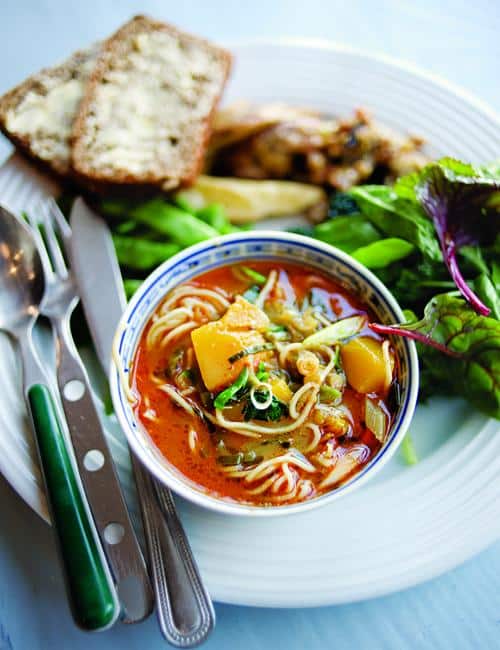
Photo by: Raymond Patrick
Our food arrives, and Gram tucks right in, but I pick apart my sandwich. It's just the way I hate it and Gram likes it: butter, then meat, then cheese and mayonnaise. The tea is dark and bitter with a strong metallic taste.
I begin to doubt the accounts I've read about "new Irish cuisine." The feeling is heightened by the next morning's "full Irish breakfast" at the hotel, featuring dried-out scrambled eggs, black pudding — a sausage often made from steel-cut oats and cattle blood — and some suspect-looking brown bread with the consistency of cardboard. Gram happily eats a full breakfast as if she were at home. I try to get down some porridge made barely palatable by rich Irish cream — fattier than ours back home — which I have doused upon it.
We leave Dublin mid-morning, heading south to County Wicklow, known for its rustic farming community and the BrookLodge Hotel & Wells Spa in Macreddin Village. It's home to Ireland's only certified organic restaurant, the Strawberry Tree. As we wait for our meal in a bright sitting room of couches and coffee tables draped in white cloth, Gram says cheerfully, "You do know that the Irish boil everything, right?"
I nod miserably. She has told me this many times before. But what arrives is a platter heaped with tender greens, bacon, seasonal vegetables and flame-orange butternut squash. It's topped with succulent free-range chicken and duck slices.
Gram eyes the large platter doubtfully and comments on its size. I know, too, that she's not one for the vegetables. Still, I fill her plate and mine and gingerly take a bite. The vegetables are fresh and sweet, the loaminess of the earth from which they were pulled that morning just barely detectable. Across from me Gram is eating the meal with gusto. She downs her full plate, easily three times what she'd eat in an entire day of meals back home.
"Delicious," she says, sipping her tea. "And so unusual." I learn from proprietor Evan Doyle that the richness of the lunch platter is not unusual at all. "Irish food tells a story about initiative and what we can pull from this amazingly fertile land," he says with conviction.
The food Doyle serves is entirely organic and sourced locally. The vegetables are from Alan Pierce of Gold River Farm, just over the hill. Evan also forages, though he looks like he'd be more at home at a fashion show in Milan than picking wild mushrooms and garlic in the sheep-shorn fields.
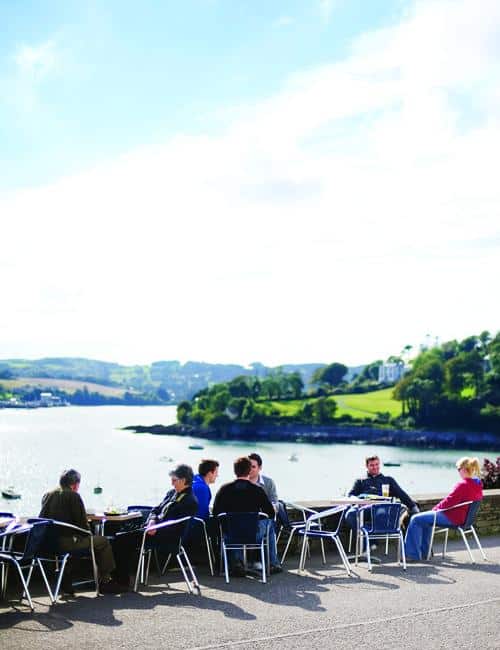
Photo by: Raymond Patrick
After saying goodbye to Evan, we head into County Wexford, keeping the sea to our left. We eventually arrive at Dunbrody Country House Hotel in Arthurstown. It's an estate hotel run by chef Kevin Dundon and his wife, Catherine, who delight at Gram's "good Irish name": Margaret Hanlon. In the early-19th-century house, they usher us into the formal dining room for dinner. I have local prawns, big as baby lobsters. Gram has a whole local flounder (half the size of our U.S. variety), delicately fried in butter, and a bowl of new potatoes that would feed a family I watch nervously as Gram picks at the fish and am surprised to see how deftly she is able to remove the flesh from the bone.
"It's all coming back," she says so softly I barely hear her.
"What's that, Gram?" I ask, touching her arm.
"The fish — it's just like my father used to catch," she says. "And the way it's cooked, on the bone like this, I'd forgotten. It's just like how my mother cooked it when I was a girl."
During the potato famine in the 1840s, more than a million Irish fled to America. Many left from the seaport of Cobh in County Cork, but since the late 1990s, Cork has become the hub of artisanal Irish food production. At the forefront of that movement is the Allen family.
Theirs is a story of old-fashioned Irish gumption. In the 1960s Myrtle Allen, now considered Ireland's Julia Child, created a restaurant out of the dining room at Ballymaloe House, the Allen family home outside the town of Shanagarry. As word of her cooking spread, the place was enlarged to accommodate more guests and ultimately became a hotel. When Darina O'Connell, then a hotel- and catering-management student, came to Ballymaloe to apprentice, she married Myrtle's son Tim. But the couple, struggling to run the farm during an economic downturn in the 1970s and '80s, needed to make the place earn money, so Ballymaloe Cookery School was born, located two miles from the House. This food dynasty is carried on today by granddaughter-in-law Rachel, a TV personality and food columnist.
"Ireland's Julia Child" created a restaurant out of the dining room of her family home. Before long, a cooking school was born.
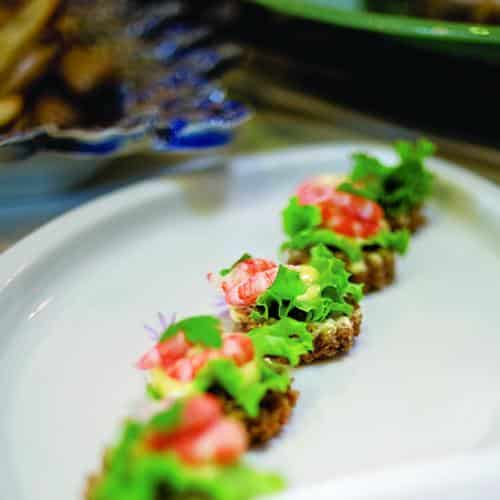
Photo by: Raymond Patrick
Gram and Myrtle naturally gravitate toward one another when we eat dinner with the family at Ballymaloe House. Ladies in their 80s, grandmothers and great-grandmothers both, Irish and Irish-American, they have much to discuss. Myrtle thoughtfully sits next to Gram over dinner, facing her and speaking slowly so Gram may read her lips. I have roast guinea fowl with the ubiquitous boiled potatoes, and Gram starts her meal with a potato soup with parsley pesto that she comments on as not being as thick as her mother's but surprisingly delicious. When the dessert cart is brought around, Myrtle insists we try an ancient local delicacy, carrageen moss pudding, a sweetened milk blancmange thickened with carrageen seaweed that 83-year-old Myrtle gathers from the shore and dries herself.
The pudding is slightly sweet and so light as to be almost liquid. It is served with blackberry, apple and sweet geranium compote. I know the idea of a seaweed pudding will not appeal to Gram though she's a lover of sweets. I eat my portion slowly, overfull from the generous meal, but Gram eats hers eagerly.
"It's just so interesting!" she says to Myrtle. In Gram's verbiage, "interesting" isn't always a compliment.
This time, though, I know it is.
As we trek across the country, my grandmother-in-law is transforming. A quiet, shy person who often hangs back because of her hearing loss, she is becoming more talkative and relaxed. It is, she tells me, because she feels so at home with all the Irish faces. I see in her eyes that she is recalling the stories of this home that were still told in her childhood some 80 years after her great-grandfather had moved to America.
Even the wet weather that dogs our travels does not dampen her spirits, but the reminders of the Great Famine do. We pass through the fishing village of Skibbereen, site of one of Ireland's largest famine burial grounds. Hardship tales are in the famous old song, "Dear Old Skibbereen." Gram puts her hand on her chest and looks away.
We reach the little town of Lisdoonvarna, best known for its matchmaking festival. We stop to eat at the Roadside Tavern, where a noisy crowd watches a soccer match on the television and men eye the female customers in town for the festival. The rain has driven the festival goers indoors, where they sip their pints, hoping it will clear enough for the outdoor dance in the market square to continue.
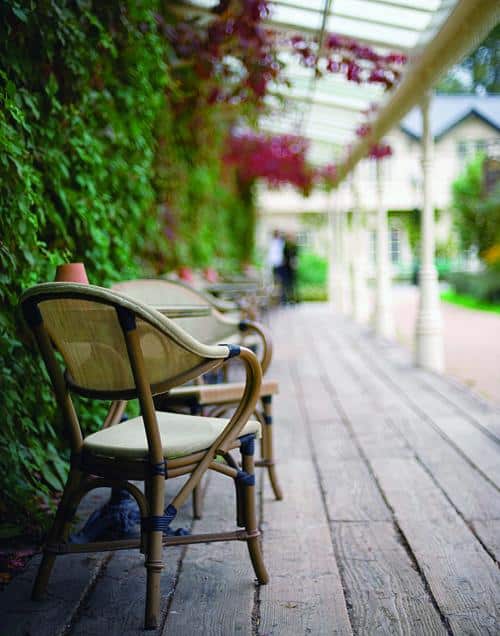
Photo by: Raymond Patrick
Owners Peter and Birgitta Curtin join us and offer some of the salmon they smoke in their neighboring Burren Smokehouse. Although we are not a salmon-eating family, we have some with a green salad and a mound of champ, or scallion-seasoned mashed potatoes. Organically farmed and amazingly fresh, with just enough smoke to tantalize the taste buds, the salmon is seasoned with spices and dilisk, a red seaweed, then it's fried and eaten like potato chips.
As we enjoy the salmon, Peter talks about growing up in an Ireland rife with poverty. He says it was only in the 1990s, with the roar of the "Celtic Tiger" — as the Irish call their economic boom — that people felt safe from hunger. "Maybe that's why we put more on the plate than any sane person can eat," he says, pausing. "It's because now we can."
Gram has been fixed on Peter. Sometimes she misses words when people speak fast, but this time she hasn't. Her eyes tear as she nods. "I grew up in the Great Depression. We were poor, too," she says quietly to me. "Whenever we could, we made sure there was plenty of food served." Economic growth has flattened here recently, as it has everywhere, but one can hope Ireland's improved culinary fortunes will survive the downturn.
We leave Lisdoonvarna in a thoughtful mood, heading north toward Galway, an Irish harbor town at its best, full of sidewalk cafés, dancing in the streets and intimate pubs with warm music. It's dark when we pull in and meet Seamus Sheridan in the wine bar above his cheese shop. He is sitting with his mates, blustering and storytelling as if he were in a pub, but there are cured meats and olives on the rough-hewn tables. Seamus, all angles and hard edges, is bemused with my idea that Irish food is much more than spuds and meat. He believes it is the work of food importers like him and local artisans who are changing the reputation. Sipping his wine, he growls out a story about how, as a child, fresh orange juice was a delicacy beyond his Dublin family's means.
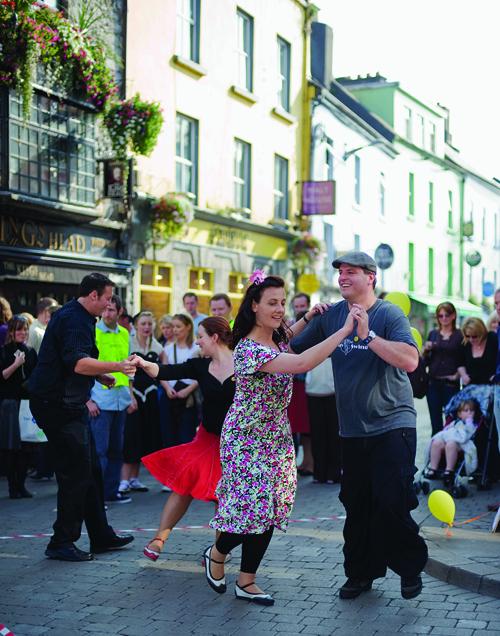
Photo by: Raymond Patrick
It is Gerry Flynn, the bar man, who lets me into the closed shop below and proudly points out the imported cheeses and meats alongside items from local farms. Rosy-cheeked and mustached with a stocky frame, Gerry seems the prototypical pub master — and so he once was before he came to work for Seamus. He talks about organic Irish produce and the fine quality of their goods. Like so much in Ireland, he is full of surprises.
Our travels take us into northern ireland. Fields are green upon green, dotted with fluffy white sheep. It's hard to believe there were bloody battles here a relatively short time ago. The Troubles here are over, but Gram still seems nervous, and her jaw is set as she looks out the window. Her eyebrows rise when we pull into the town of Bangor and the grounds of Clandeboye Estate, which started as a small farm in the 1670s. It's now much more than that, including courtyards, walled gardens and a grand house. The estate is still owned by the original family and is home to an Irish noblewoman, the Marchioness of Dufferin and Ava.
Part of the land is dedicated to the preservation of native plant species and hosts a herd of Moile cows, an endangered Irish breed. The estate also keeps a prize-winning herd of Jersey and Holstein cattle. That rich milk is made into small-batch artisanal yogurt by the estate staff and David Crawford, a former family grocer.
Like all who work here, David is formally polite, each person knowing his or her exact place in the hierarchy of the estate, a sharp juxtaposition to the easygoing nature of the Irish we have met in the Republic. But he is kind and eager as he shows us the grounds and a peek at the great house.
Gram scoops up a bit more. "This is just wonderful,," she says. "Send it to America — I'll eat it every day."
His warm nature is most apparent when we return to the dairy, where he will share a bowl of Clandeboye's rich strained yogurt drizzled with honey. Gram is an avowed noneater of "plain" yogurt, but we haven't eaten anything today except the slightly sweet, dry "digestive" biscuits that she nibbles as we drive. "Oh, we never had yogurt growing up," she says, emphasizing the "we" and then tasting it gingerly.
She scoops up a bit more. "This is just wonderful," she says. "Send it to America — I'll eat it for breakfast every day."
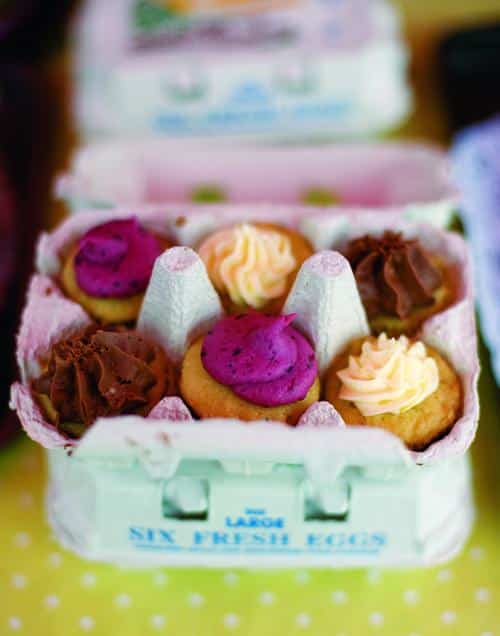
Photo by: Raymond Patrick
Before we leave northern ireland, I arrange to meet Norah Brown, co-owner of the Grange Lodge Country House near the town of Dungannon. She's a self-taught cook who is regarded as something of a local food ambassador. As we drive toward Belfast, Gram is nervously looking out the window. She begins to tell me how her family used to read newspaper accounts of the clashes between the British Army and the Irish Republican Army in Northern Ireland. What had seemed then like an ongoing war zone was never a place that Gram wanted to be.
Yet Norah warmly welcomes us to the quietly elegant dining room of the Grange Lodge. She serves pizza on a soda-bread crust and a salad of fresh garden greens. The surrounding area is considered orchard country, and Norah has picked Bramley apples from the orchard behind her house. She and husband Ralph talk to us earnestly about the North's new renaissance. They are kind people, passionate for their traditions yet timid, too, a holdover from the era of the Troubles.
I lament that we cannot taste more. "Not to worry," the cook says. "I know you'll come back."
For Norah, the answers to life's troubles seem to be rooted in flour. She is an evangelist for soda bread and wheaten bread — the hallmarks, she says, of Irish cuisine. She speaks lovingly of threshing and grinding wheat and the feel of flour. "Our ancestors worked hard to create something to exist on," she muses.
In her modern kitchen, she makes sweet and savory versions of soda bread in a massive Aga stove. It is an activity Gram can understand; her mother faithfully made the week's bread all through Gram's childhood. It was a task born more from necessity than love.
"My father would bring home 50-pound sacks of flour, carrying them on his shoulder," Gram recalls. "My mother made wonderful bread out of it, but I was too young to appreciate it."
We say our goodbyes and head toward the car, where Gram pauses to look out over the rain-washed countryside. One of Norah's rolls is wrapped in a napkin in her hand. I lament that we cannot stay the night and taste Norah's famous breakfast porridge the next morning, laced with a special Demerara sugar and cream — and just enough Bushmills Irish Whisky to give it a kick.
"Not to worry. There is always next time," she says with a smile and a warm hug. "I know you'll come back."
I look at Gram, who smiles as she looks back at me, and I know Norah's words are true.
